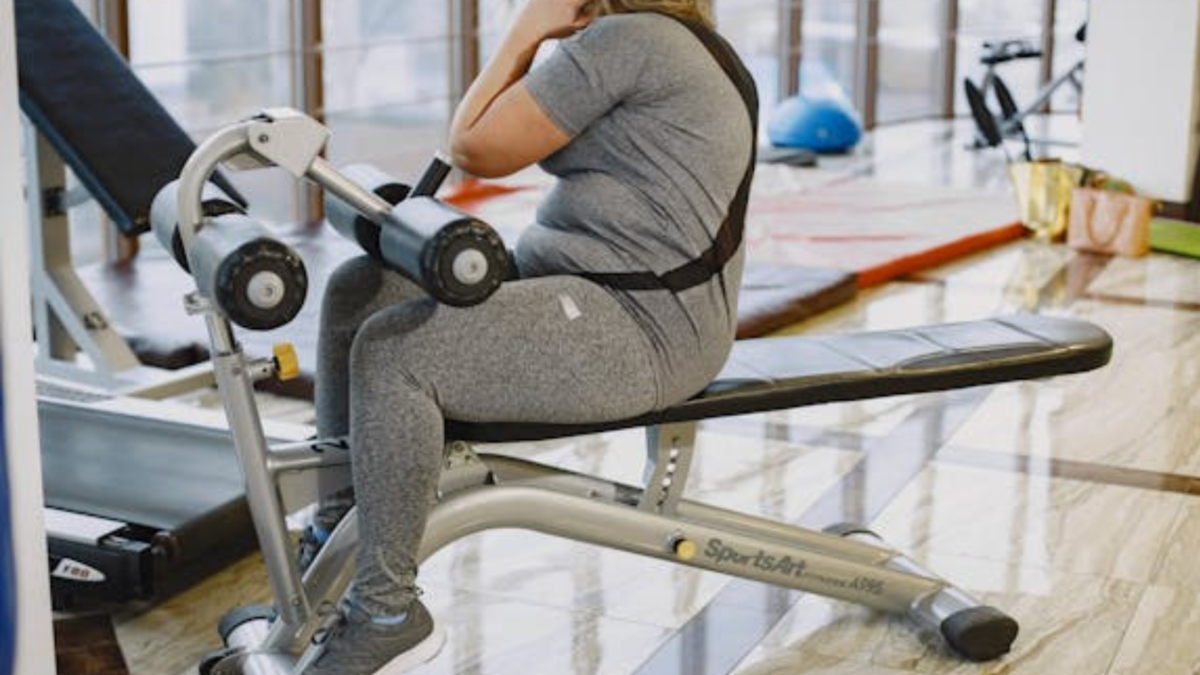


Medically Reviewed By Margaret Etudo. Written By The Vitamins For Woman Team.
Your body may cry out for movement if you’re battling mysterious aches, sore joints, or creeping bone pain. These exercises strengthen bones, fight osteoporosis, and keep you mobile as you age.

Bones are living tissue, constantly rebuilding themselves through a process called remodeling.
But with age, inactivity, or hormonal changes, this process slows, leading to bone loss or even osteoporosis.
Many don’t realize that bones respond to exercise similarly to muscles, growing stronger when stressed properly.
This guide is for anyone looking to improve or maintain bone health through practical, effective workouts.
We’ll break down the most effective exercises to prevent bone loss, review the science behind bone remodeling, and give you customizable plans for every fitness level.
Exercise is not only about muscle tone or cardiovascular fitness. It’s one of the most powerful tools for maintaining and increasing bone mass. Here’s why.
Wolff’s Law explains how bones adapt to the stress placed upon them.
When bones experience mechanical stress (from activities like jumping, walking, or lifting weights), they respond by increasing density and strength in the areas under the most pressure.
This principle is why weight-bearing exercises for bones are essential. Without regular stress, bones become weaker.
That’s why astronauts, who spend extended time in zero gravity, experience rapid bone loss.
NASA has extensively studied bone density because astronauts in microgravity lose bone mass at an accelerated rate.
These studies show that weight-bearing and resistance exercises like squats, lunges, and jumping drills are the most effective countermeasures against bone loss.
According to NASA’s findings, performing load-bearing movements under gravity increases osteoblast activity (cells that build new bone tissue).
These findings have been applied to Earth-based training routines designed for osteoporosis prevention, especially among older adults.
These movements combine weight-bearing, resistance, and balance to target bone growth, especially in common fracture areas.
Squats are among the best weight-bearing exercises for bones. They target the femur, pelvis, and lumbar spine areas most vulnerable to bone loss.
When done correctly, squats improve balance and coordination, reducing fall risk.
Bodyweight squats are a great starting point, but adding weights (dumbbells, barbells, or resistance bands) increases the load and impact, triggering a stronger bone-building response.
Both walking and running are weight-bearing, but the degree of impact makes a difference. Walking is gentler, making it ideal for older adults or beginners.
Daily brisk walks, especially on uneven terrain, stimulate bone density, particularly in the legs and spine. Running offers a higher impact, which means more stress and, thus, more bone adaptation.
A landmark Harvard study showed that specific yoga poses performed daily can improve bone density, especially in the spine, hips, and femurs. Warrior I and Warrior II are standout poses.
These poses combine isometric hold (contracting muscles without moving) with bodyweight resistance, stimulating bone growth in the lower body and spine.
Lunges work similar muscle groups as squats but with an added balance challenge, engaging stabilizers and core muscles.
They’re excellent for building strength in the femur, hips, and pelvis hotspots for osteoporosis-related fractures.
Step-ups mimic natural movements like climbing stairs or hiking, targeting the lower spine and hips. These exercises on a sturdy bench or aerobic step add vertical loading to the skeletal system.
Weighted step-ups (holding dumbbells) double as resistance training for bone health. Keep your movements slow and controlled to protect your knees and ankles.
Rows strengthen the upper back and spine while promoting posture. Using resistance bands for bone health is ideal for people who can’t lift heavy weights.
Bands create consistent resistance throughout the movement, stimulating the arms, shoulders, and thoracic spine bones. They’re also joint-friendly and perfect for home workouts.
High-impact exercises like jumping jacks or rope jumping apply dynamic force on bones, especially in the legs, hips, and spine. Just 10 minutes a day can significantly improve bone density.
These movements should be done carefully, especially by those with joint issues or existing bone loss.
Deadlifts simultaneously target multiple muscle groups and bones, especially the spine, pelvis, and legs. Using a barbell or dumbbell, this movement encourages new bone formation by heavily loading the skeletal frame.
Isometric exercises like planks strengthen core muscles that support the spine and pelvis. A strong core improves balance, reducing the risk of falls that could lead to fractures.
Side planks are beneficial for the oblique muscles and hip bones. For beginners, they can be modified with knees on the floor.
Even when modified, push-ups work the wrists, arms, and shoulders areas often neglected in bone-strengthening routines. Wall push-ups are safe for beginners and can be advanced to knee or full push-ups as strength builds.
Hiking combines uneven terrain walking with additional load-bearing if you carry a backpack. It stimulates the entire skeletal system, including the ankles, knees, hips, and spine. Add light weights to your pack (5–10 pounds) to increase resistance gradually.
Climbing stairs, whether at home, at work, or on a stair machine, promotes vertical impact that strengthens the spine and hips. It’s a practical way to increase bone stress daily without a gym.
Try adding short stair intervals to your cardio routine to get bone-building benefits from your daily movement.
Everyone can benefit from exercises to prevent bone loss, but how you begin depends on your current fitness level.
Start with walking, yoga poses like Warrior I and II, wall push-ups, and resistance bands. Focus on consistency, 3–4 times per week. Combine with bodyweight squats and lunges once strength improves.
Include weighted squats, lunges, stair climbing, and resistance band rows. Add core work with planks and try jump rope in small intervals—alternate cardio with 2–3 strength sessions weekly.
Incorporate deadlifts, full push-ups, trail hiking with backpacks, and jumping drills. Combine 3 days of strength training with 2 days of cardio. Don’t forget to stretch and recover.
Aim for 30–45 minutes of weight-bearing or resistance exercises at least 4–5 days per week. Consistency is critical. Even short daily sessions matter more than sporadic intense workouts. Pair this with a calcium-rich diet and vitamin D.
Swimming is excellent for cardiovascular health, but it’s not weight-bearing, so it doesn’t stimulate bones like walking or strength training. To prevent osteoporosis, supplement swimming with impact exercises.
Yes, when done with proper form and under professional guidance, squats can help rebuild bone. Start with bodyweight squats, and progress only when confident. Avoid deep squats or heavy weights if spinal osteoporosis is diagnosed.
Strong bones aren’t built overnight, but with the right exercises and consistent effort, they can be preserved and even strengthened—well into old age. Whether you’re in your 30s looking for prevention or managing osteoporosis in your 60s, these exercises to prevent bone loss give your skeleton the stimulation it needs to thrive.
Use the science-backed movements in this guide to build your routine, adapt as needed, and make bone health a lifelong commitment.

medically reviewed by margaret etudo, BPharm. written by the vitamins for woman team.